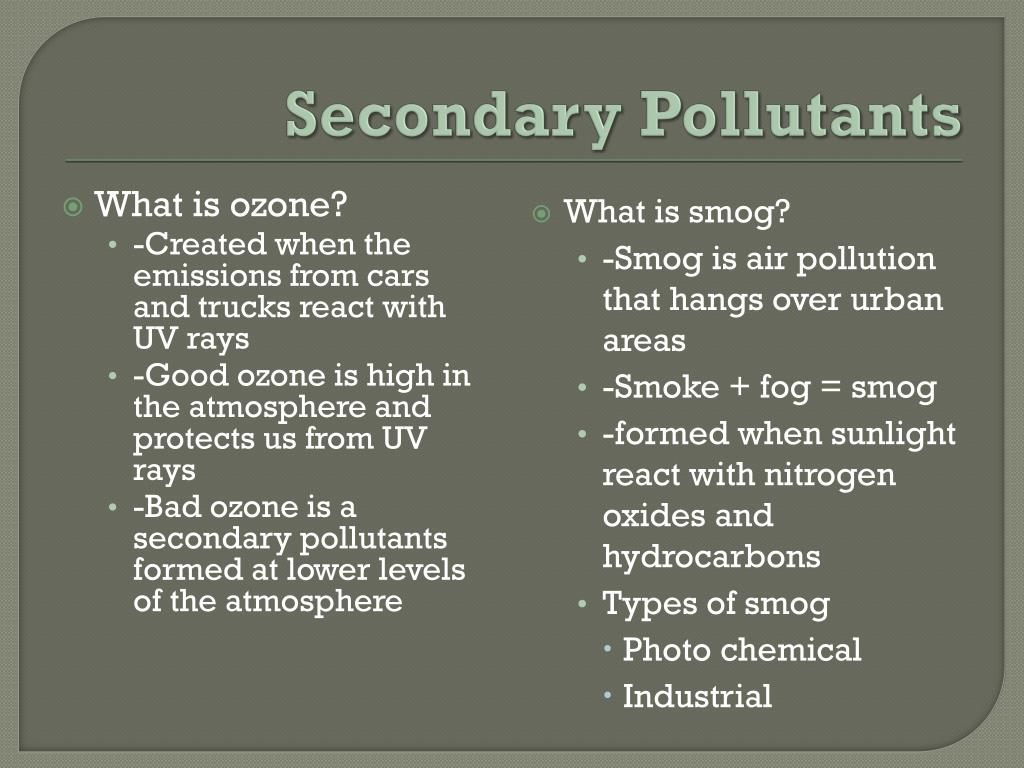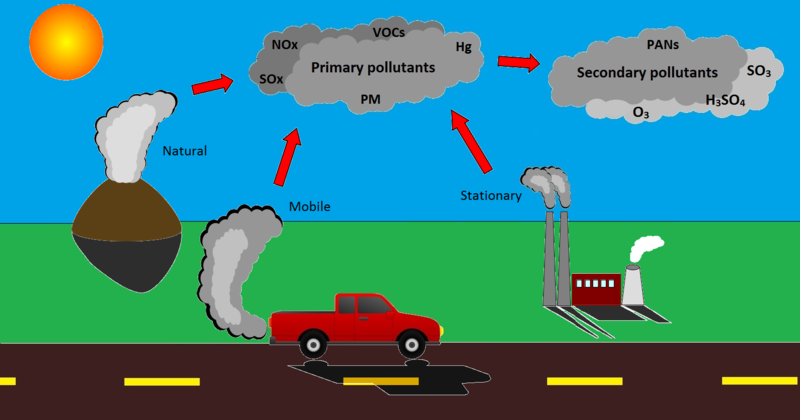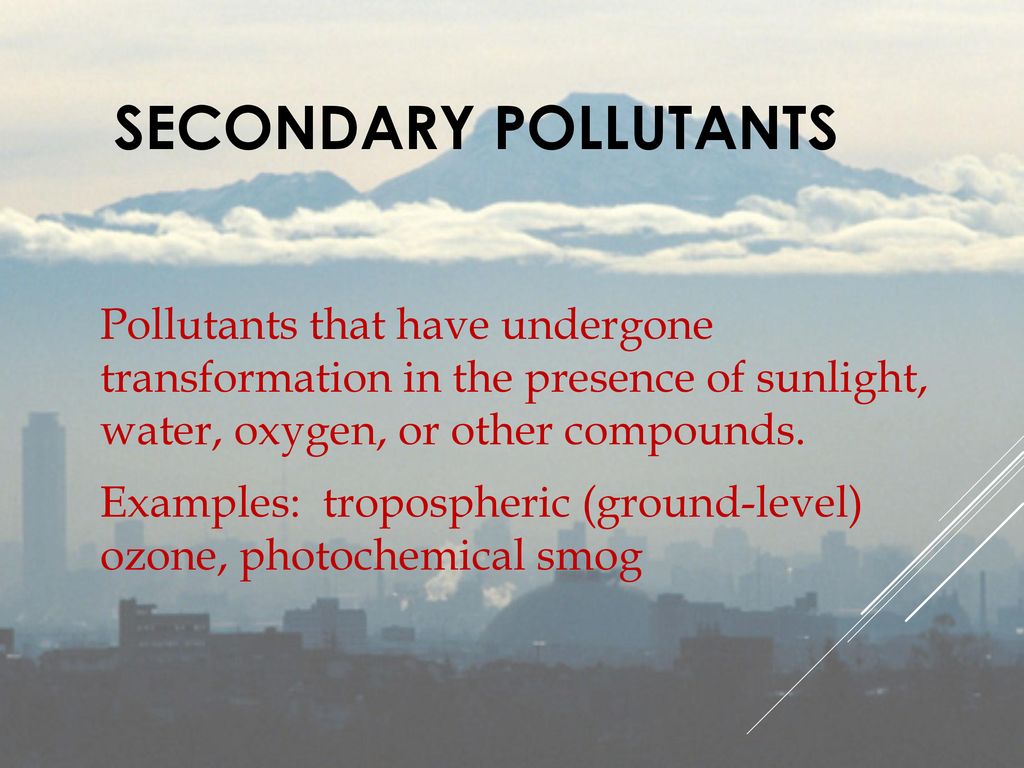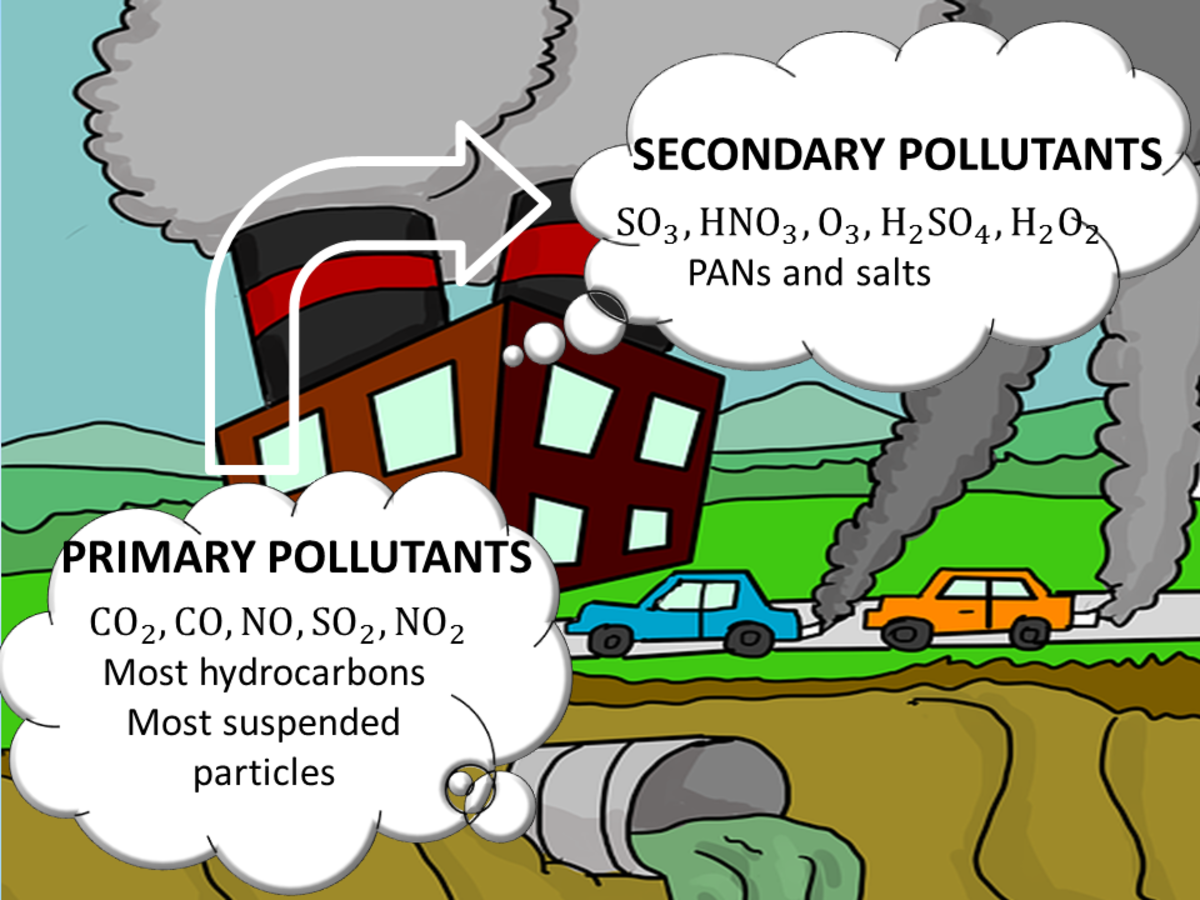Which Of The Following Is A Secondary Pollutant
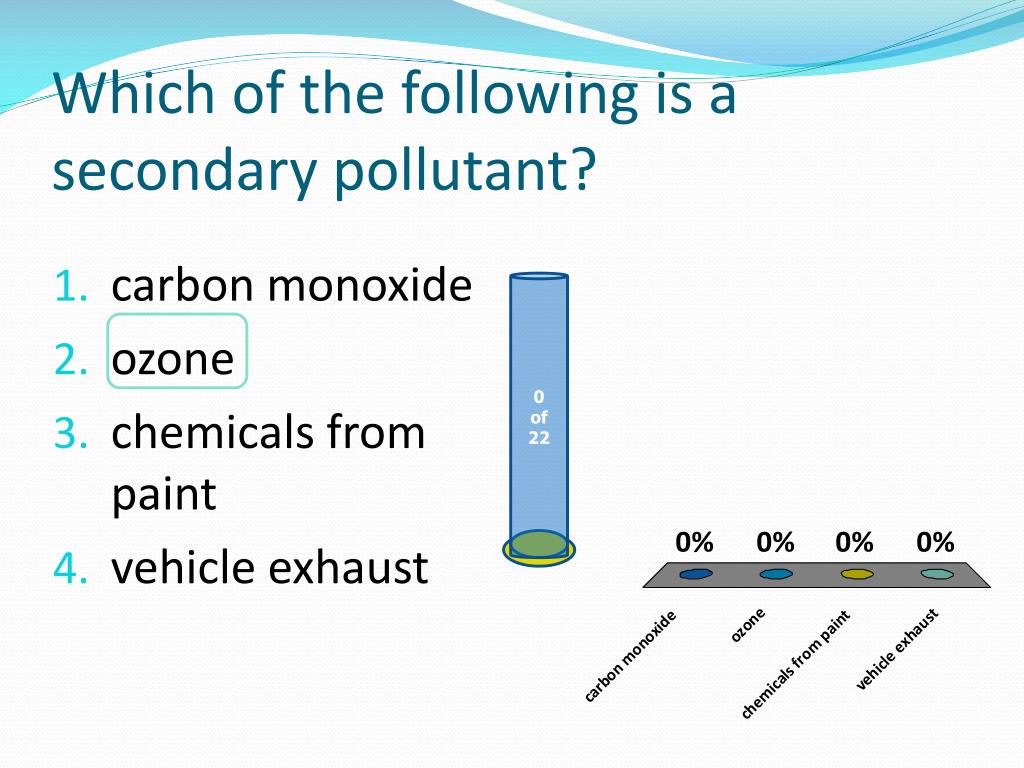
A critical alert has been issued concerning air quality: Identifying a secondary pollutant is now paramount due to escalating health risks.
The focus is on clarifying which atmospheric component, formed through chemical reactions rather than direct emission, poses the most immediate threat.
Identifying the Culprit: Secondary Pollutants Explained
The burning question: Which common pollutant qualifies as secondary? Understanding this distinction is key to effective mitigation strategies.
Secondary pollutants are not directly emitted from sources like cars or factories. Instead, they form when primary pollutants react in the atmosphere under sunlight or other conditions.
This transformation makes them particularly insidious, often appearing far from the original source of pollution.
Ozone (O3): Public Enemy Number One
The answer, without equivocation, is ozone (O3) in the troposphere (ground level). This is the secondary pollutant of most concern.
Unlike the protective ozone layer in the stratosphere, ground-level ozone is a harmful air pollutant. It is created when nitrogen oxides (NOx) and volatile organic compounds (VOCs) react in the presence of sunlight.
Data from the Environmental Protection Agency (EPA) consistently highlights ozone as a leading cause of respiratory problems, especially during summer months.
Other Contenders: But Ozone Takes the Lead
While other pollutants might be considered under specific contexts, ozone's pervasive nature and widespread impact make it the primary focus.
Examples of other pollutants include: Sulfur dioxide (SO2): This is usually a primary pollutant and Particulate matter (PM2.5): Can be both, and Carbon monoxide (CO): Primary pollutant
However, ozone's formation through complex atmospheric chemistry uniquely qualifies it as a significant secondary pollutant, generating substantial health and environmental damage.
Health Impacts: A Public Health Crisis
The consequences of ozone exposure are severe and far-reaching. It exacerbates respiratory illnesses such as asthma, bronchitis, and emphysema.
The American Lung Association reports that even short-term exposure can cause coughing, throat irritation, and reduced lung function, particularly in children, the elderly, and individuals with pre-existing respiratory conditions.
Long-term exposure is linked to chronic respiratory disease and premature mortality.
Where and When: Geographic Hotspots and Seasonal Variations
Ozone pollution is not uniformly distributed. Urban areas and downwind regions from industrial centers often experience higher concentrations.
Peak ozone levels typically occur during the summer months, when sunlight is most intense and temperatures are highest, accelerating the chemical reactions that form ozone.
Data from the World Meteorological Organization (WMO) shows a clear correlation between temperature increases and ozone exceedances in several major cities globally.
Mitigation Strategies: What Can Be Done?
Combating ozone pollution requires a multi-faceted approach. Reducing emissions of NOx and VOCs is essential.
This can be achieved through stricter vehicle emission standards, promoting the use of electric vehicles, and implementing regulations on industrial emissions.
Furthermore, promoting energy efficiency and renewable energy sources can reduce overall air pollution.
The Role of Regulations and Public Awareness
Strong regulatory frameworks are vital for controlling ozone pollution. The Clean Air Act in the United States, for example, sets standards for air quality and requires states to develop plans to meet those standards.
Public awareness campaigns can also play a crucial role. Educating the public about the sources and health effects of ozone pollution can encourage individuals to take actions to reduce their exposure and support policies that promote cleaner air.
Information dissemination through public health advisories and real-time air quality monitoring can empower individuals to make informed decisions about their activities.
Ongoing Developments and Future Outlook
Research into new technologies and strategies for reducing ozone pollution is ongoing. This includes the development of advanced air purification systems and the exploration of innovative approaches to reduce emissions from vehicles and industry.
International cooperation is also essential, as air pollution can cross borders. Collaborating to share best practices and coordinate efforts to reduce emissions can help to address the global challenge of ozone pollution.
Continued monitoring and assessment of ozone levels are crucial for tracking progress and identifying areas where further action is needed.
The urgency of addressing ozone pollution cannot be overstated. With proactive measures, we can improve air quality and protect public health from the harmful effects of this insidious secondary pollutant.

